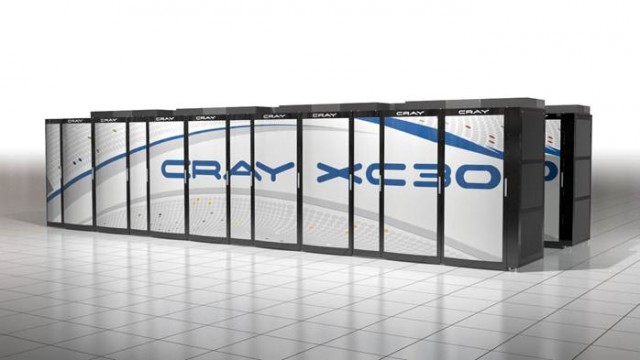Cray gives its supercomputers 33 percent more cores with Ivy Bridge upgrade

Cray Inc. announced today that it is now equipping versions of its Cray XC30 massively parallel processing supercomputer series with “Ivy Bridge” based Xeon E5-2300 v2 processors. The switch to Ivy Bridge—in both air and water-cooled versions of the two supercomputer lines—will give the systems more cores, better performance, and higher energy efficiency. In addition to the XC30 updates, Cray is also adding the Ivy Bridge processors to its CS300 cluster supercomputers.
The XC30 line, previously known as “Cascade,” is a hybrid next generation high performance-computing platform that uses multiple processor and coprocessor technologies, including Intel’s Xeon Phi parallel processing coprocessor. Designed for a wide array of high-performance applications, it in some ways mirrors the architecture of Tianhe-2, the Chinese supercomputer currently at the top of the TOP500 ranking of supercomputer systems. (Oak Ridge National Laboratory’s Titan supercomputer, built by Cray, uses AMD Opteron chips and NVIDIA Tesla GPUs and is currently in second place on TOP500.)
Developed by Cray in collaboration with DARPA’s High Productivity Computing Systems program, it runs on Cray’s Linux Environment and packs up to 384 processors per cabinet. Processors are paired in compute nodes that have 32 to 128 gigabytes of memory, which are connected to each other by a 500 gigabit-per-second switching fabric called the Dragonfly Interconnect.
Read 2 remaining paragraphs | Comments
![]()




